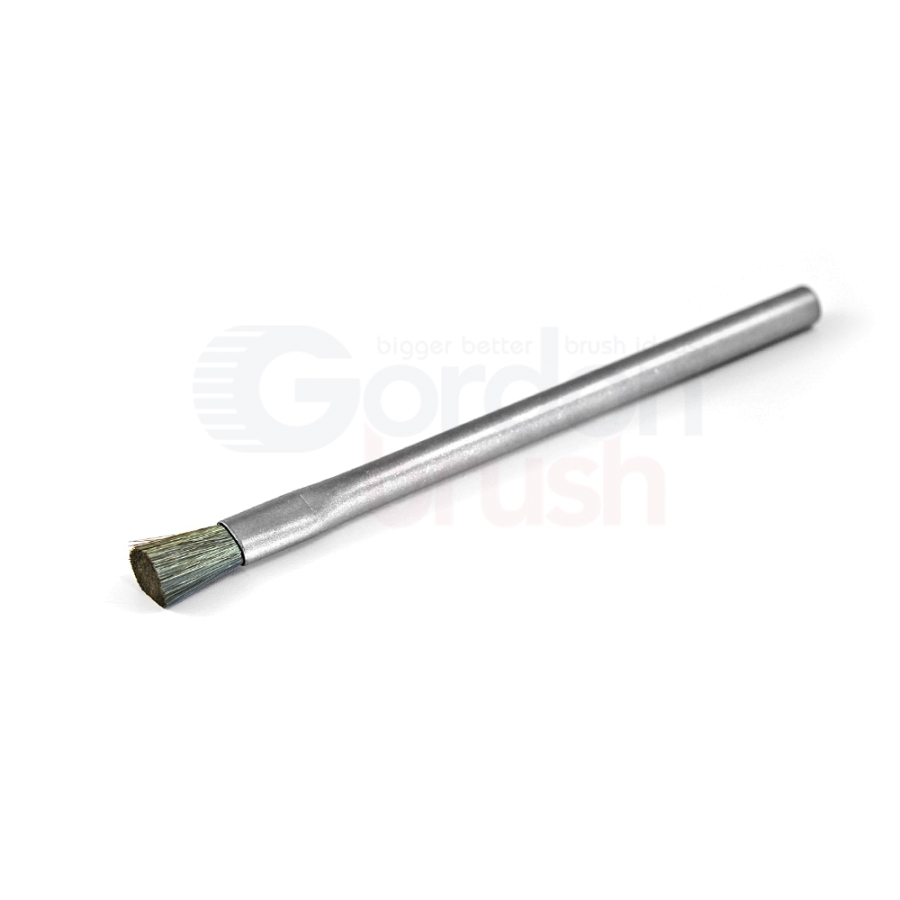Conductive ESD Brushes
Conductive Brushes have a surface resistivity of 102 Ω /cm - 104 Ω /cm and are perfect to use when you need to remove static buildup from the work surface. Conductive brushes will act as a conduit between the charged surface and the path to ground. Made with fully conductive materials that are active static eliminators, your choice becomes the style and size that best works for you. Please use these brushes with a wrist strap or other mechanism to provide a path to ground.
Conductive brush materials range from metal wires such as brass, phosphor bronze, stainless steel and carbon steel to fibers such as Conductive Nylon (carbon coated), carbon fiber and a special fiber called Thunderon®.
Thunderon® is a conductive fiber material that offers far greater control of static electricity, and superiority in overall performance than carbon coated conductive fibers. Thunderon® is a very thin / soft fiber made with an extremely conductive coating. It has good abrasion resistance, does not break easily, and has a strong anti-bacterial performance due to the nature of the surface coating. Conductive brushes are often used to dissipate charges on electronically charged surfaces and Thunderon® is very effective at this. The surface resistivity of Thunderon® is 102 Ω /cm - 103 Ω /cm. Goat hair is commonly mixed with Thunderon® to help reduce costs and to slightly stiffen the brush, since Thunderon® is so soft when used by itself.
Technically, Thunderon® fiber is an acrylic fiber that has been chemically bonded with a layer of copper sulfide. This outer layer becomes a part of the host fiber itself, which precludes the 'flaking' problem experienced by other conductive fibers. The fiber diameter is as fine as 0.004 cm (0.0015") and its conductive layer is a super thin 300-1,000 (angstroms). It has electrical specific resistance of 102 Ω /cm - 103 Ω /cm.

Five categories of Conductive ESD Synthetic Brushes are available with fill materials that include, conductive nylon, Thunderon®, and Thunderon®/Goat hair set into seven different handle materials. There are also a wide variety of different specs, such as size, shape, handle length, handle width, brush face length, brush face length, brush diameter, and bristle diameter.
Conductive brushes are used for applications where it is necessary to reduce the static charge to 0v because even a small charge obstructs the operation and the medium being discharged is not sensitive to high current flow. An example is the brushes inside copy machines. The charge on the paper is small but its presence is sufficient to make individual sheets of paper cling together.